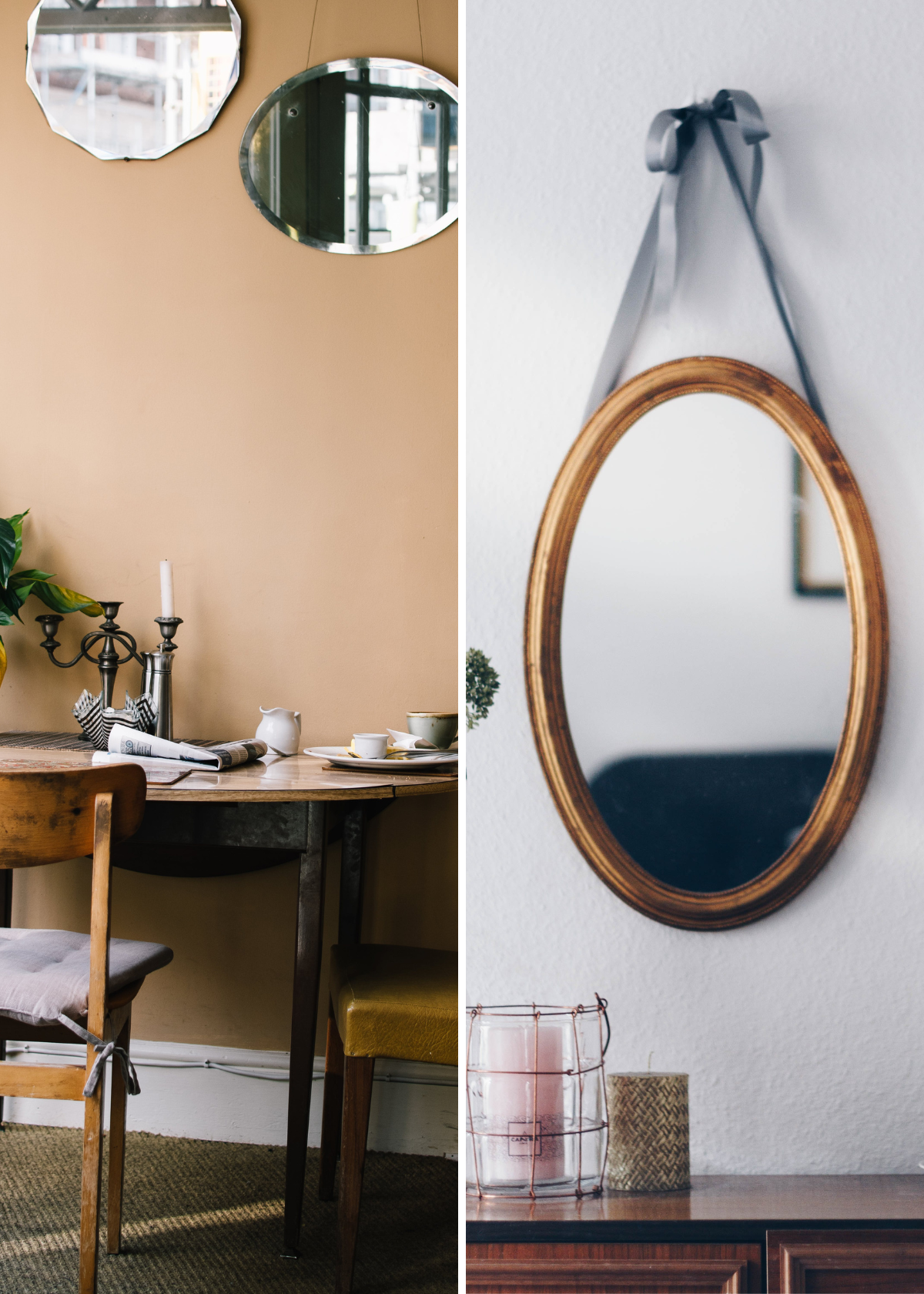Mirrors are not just reflective surfaces; they are gateways to self-perception, design elements in our homes, and tools in various scientific applications.
But what is the difference between high quality mirror and low quality mirror? This article will delve into the intricacies that distinguish a good quality mirror from its inferior counterparts, exploring the materials, manufacturing processes, and features that contribute to the final quality of a mirror.
The Role of Glass Quality in Mirror Manufacturing
When it comes to the quality of a mirror, the glass sheet it starts with is foundational. High quality mirrors are typically made from clear glass that is completely flat and free of imperfections. This ensures that the reflected image is as accurate as possible. On the other hand, low quality mirrors might use cheaper mirrors with slight waves or bubbles, leading to a distorted reflection.
The glass thickness also plays a crucial role. Thicker mirrors, often found in high quality glass products, are less prone to warping and can provide a more stable reflection over time. Conversely, thinner glass, commonly seen in cheap mirrors, may not maintain a completely flat surface, affecting the reflection quality.
Reflective Material: The Heart of Mirror Silvering
Mirror silvering, or the application of the reflective material, is what transforms a plain glass sheet into a mirror. High-end mirrors may use silver nitrate, which provides a clear and durable reflective layer. This process involves multiple coats to ensure a uniform and long-lasting reflective surface.
In contrast, lower quality mirror production might opt for cheaper and less durable materials like aluminum or other chemical compounds. These can result in a less reflective coating that may degrade more quickly over time, leading to a bad quality mirror that doesn't retain its reflective properties as well.
The Manufacturing Process: Precision Leads to Perfection
The manufacturing process is another critical factor in determining the overall mirror quality. Expert glass companies take accurate measurements and employ meticulous methods to ensure that the reflective coating is applied evenly. This includes careful cleaning of the glass and controlled environmental conditions to prevent imperfections.
Low quality mirrors, however, may be produced with less precision, leading to issues like thin coatings or uneven application. This can cause spots where the coat turns or peels, significantly reducing the life expectancy of the mirror.
The Importance of a Protective Paint Layer
After the reflective material is applied, a protective paint layer is often added to safeguard the silvering. High quality mirrors will have a durable paint, such as copper free paint or one with red lead, which helps to protect the reflective layer from oxidation and physical damage.
Low quality mirrors might skip this step or use just a layer of cheap paint or even a brown paper backing, which offers minimal protection and can lead to a quicker degradation of the reflective material.
The Thickness of the Mirror: A Measure of Quality
The thickness of the mirror is not just about glass quality; it also pertains to the reflective material. High quality mirrors will have a thicker layer of silver applied, ensuring that the reflection remains vibrant and clear for many years.
On the flip side, cheaper mirrors might have a very thin layer of reflective material, which can wear off or tarnish more easily, affecting the mirror's ability to provide an accurate reflection.
Edge Sealant: The Unsung Hero of Durability
Edge sealant is another feature that can distinguish a high quality mirror from a low quality one. Good quality mirrors often have an edge sealant that protects the silvering from environmental factors like humidity, which can cause the edges to degrade.
Cheaper mirrors may not have this sealant, or it may be of lower quality, leading to the reflective coating peeling or flaking at the edges, which can ruin the overall aesthetic and functionality of the mirror.
The Final Touch: Quality Control
Before a mirror leaves the factory, it undergoes quality control checks. High quality mirrors are inspected for any defects, ensuring that each one meets the company's standards for reflective quality and durability.
Low quality mirrors may not go through such rigorous checks, which means that defects like scratches, de-silvering, or other flaws might not be caught before the mirror reaches the consumer.
Choosing the Right Mirror for Your Home
When selecting a mirror for your home, consider the factors that contribute to its quality. A good mirror should have a clear glass, a thick reflective coating, and protective measures like paint and edge sealant. It's worth investing in a high quality mirror, as it will last longer and provide a more accurate reflection.
The Evolution of Mirror Materials: From Tin Mercury to Modern Reflecting Glass
Mirrors have come a long way since their inception when a tin mercury amalgam was the go-to material for crafting reflective surfaces. This ancient technique, although effective, posed significant health and environmental risks. Today's reflecting glass is a product of advanced technology and safer raw materials, ensuring that the mirrors we hang on our walls are not only beautiful but also benign. The shift from hazardous substances to more sustainable and less toxic alternatives marks a pivotal evolution in the mirror-making industry.
The choice of raw materials in mirror production is not just about safety; it's also about performance. High-quality mirror glass is designed to provide a flawless reflection without distortions. While low-quality mirrors might distort images, especially at one corner or the edges, premium materials combined with meticulous manufacturing processes ensure that plane mirrors, concave mirrors, and convex mirrors all maintain their intended functionality. This focus on material excellence is what separates a mere reflective surface from a masterpiece of clarity.
The Aesthetic and Functional Diversity of Large Mirrors
Large mirrors are not just statement pieces; they're functional artworks that can transform a space. The grandeur of expansive wall mirrors lies in their ability to make rooms appear more spacious and luminous. However, the size of these mirrors means that the quality of the mirror glass is even more critical to prevent any sagging or distortion over time. High-quality large mirrors are engineered with precision to ensure they maintain their perfect reflection and structural integrity, even across vast surfaces.
On the other hand, the versatility of large mirrors extends beyond their aesthetic appeal. They can serve specific purposes, such as in dance studios or gyms, where clarity and accuracy of reflection are paramount. Expensive mirrors in these settings are not just a luxury but a necessity, as they provide the true-to-life images required for professional use. Whether it's for personal grooming or critical observation, the functionality of large mirrors is as significant as their visual impact, making them an indispensable element in both residential and commercial spaces.
Where to Buy Quality Mirrors
For those looking to purchase a high quality mirror, it's best to visit a local glass shop or an expert glass company. These establishments typically offer the best glass products and can provide custom solutions if you're looking for a mirror in different shapes or sizes.
Local stores may also carry a selection of mirrors, but it's important to inspect them carefully to ensure you're getting a good quality product. Be wary of extremely cheap mirrors, as they are often indicative of lower quality.
The Impact of Mirror Quality on Interior Design
In interior design, the quality of mirrors used can significantly affect the overall look and feel of a space. High quality mirrors with accurate reflections and elegant finishes can enhance the aesthetics of a room, while low quality mirrors can detract from it.
Scientific and Industrial Uses of High-Quality Mirrors
Not all mirrors are destined for homes and businesses; some serve critical roles in scientific and industrial settings. For these applications, the highest quality mirrors are essential, as they often need to focus light precisely to a focal point or provide accurate measurements.
The Lifespan of Different Mirror Qualities
The life expectancy of a mirror is greatly influenced by its quality. High quality mirrors, with their numerous coating materials and protective features, can last for many years, even in challenging environments. Low quality mirrors, however, may start to show signs of wear much sooner.
How to Identify a High-Quality Mirror
Identifying a high quality mirror involves checking for a completely flat surface, a clear and bright reflection, and no signs of distortion. The edges should be well-sealed, and the backing should be solid and protective.
Maintenance Tips for High-Quality Mirrors
To maintain the quality of your mirror, it's important to clean it regularly with appropriate products and to avoid harsh chemicals that could damage the reflective coating. Proper maintenance can extend the life of even the best mirror.
The Environmental Impact of Mirror Production
The production of mirrors, especially high quality ones, can have an environmental impact due to the use of silver and other chemical compounds. However, many manufacturers are now adopting more eco-friendly practices, such as using copper free silvering solutions.
Custom Mirrors: Tailored to Your Needs
For those with specific needs, custom mirrors made by an expert glass company can be the best option. Whether you need a full length mirror, a shaped mirror, or a wall mirror, high quality custom options are available.
FAQs
Q: How can I tell if a mirror is high quality when shopping?
A: Look for a completely flat glass surface, a bright and clear reflection without distortion, and check the quality of the backing and edge sealant. A high quality mirror should also feel sturdy and well-constructed.
Q: Can a low quality mirror still be useful?
A: Yes, low quality mirrors can be useful in certain situations where precision and longevity are not as critical, such as in a child's playroom or for temporary decorative purposes.
Q: Where is the best place to buy a high quality mirror?
A: The best place to buy a high quality mirror is from a reputable local glass shop or an expert glass company that specializes in mirror production. They can provide you with a variety of options and custom solutions to fit your specific needs.
Summary:
Understanding the difference between high quality mirror and low quality mirror is crucial when choosing a new mirror for your home or business.
High quality mirrors offer clear and accurate reflections, durability, and an elegant appearance, thanks to superior glass quality, reflective material, and manufacturing processes.
Investing in a good quality mirror ensures longevity and satisfaction with your reflective investment.








